Any successful lead gen campaign needs:
- An offer that people can’t resist
- A landing page that’s optimised to convert
- Multiple sources of relevant traffic
This guide covers 53 different ways to nail your offer, your landing page and distribution. I’ve broken the tips out into these three chapters to make life easier for you:
- 17 tips to help you create an irresistible offer
- 22 ways to optimise your landing page
- 14 ways to drive more traffic to your campaigns
I’ve also included a Back to contents! link at the end of each chapter so you can easily skip back to this section.
Let’s get into it!
17 tips to help you create an irresistible offer
It’s all about the offer. If people don’t want what you’re putting out, nothing else matters.
Here’s how to create gated or ungated content your audience won’t be able to resist.
Solve a specific problem your audience has
This is B2B marketing 101… People are more likely to engage with something if it clearly solves a problem they know they have.
Ask yourself: what problems are your target audience really struggling with right now? And how can you make it easy as possible for your audience to solve those problems?
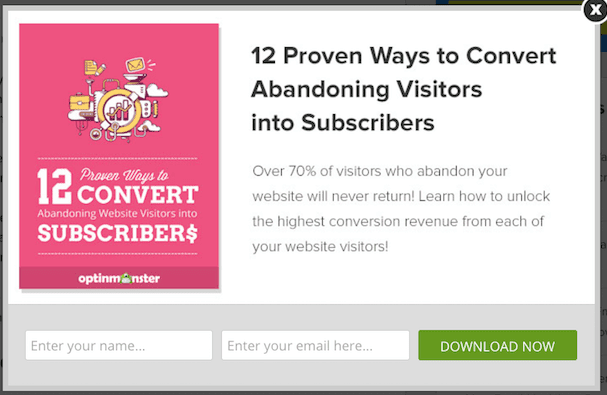
Focus on just one thing
When people are looking for solutions they’re usually trying to solve a specific problem, not a general one. If you have a flat tire you Google ‘how to fix a flat tire’ not ‘bicycle maintenance’.
Being specific reassures your audience that you’re definitely going to solve a problem they have.
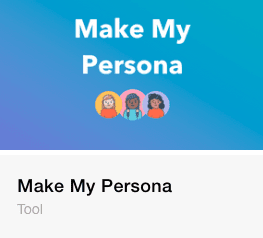
Make your title clear and compelling
If the title doesn’t sell it, no one will be interested.
If in doubt – especially if you’re not a copywriter – focus on clarity. If there’s genuine value in what you’ve created, a clear description of what your content is, who it’s for and how it’s going to help can’t go wrong.
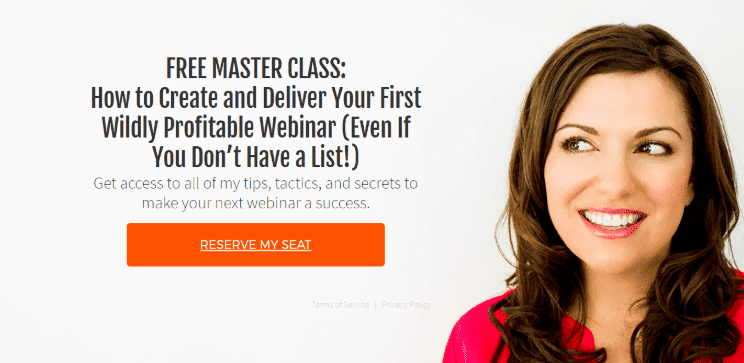
Quantify your content’s value
Which of these is more compelling?
- Increase your leads
- Quadruple your leads
Quantifying the value of something makes the outcome feel more tangible.
Refer back to your best-performing content
If you’re struggling to think of a topic, take a look at your analytics.
If an idea has performed well in the past that means it’s of value. Ask yourself how you can take that idea and turn it into something that will generate leads.
Let’s imagine you wrote a blog post that really took off. You could:
- Turn it into a checklist
- Turn it into an infographic
- Expand it upon it
- Bundle it up with other content that covers a similar topic
- Turn it into a webinar
- Turn it into an email course
Pick a goal with a clear ROI
Getting someone to submit their contact details isn’t easy. So pick a challenge or a goal that is important.
If in doubt, focus on things that make money/time or save money/time.
Make it sound short and easy-to-consume
Content doesn’t have to be long-form. The length is irrelevant. The important thing is the value that you add.
Offering a time constraint can make your content more appealing to a busy audience. According to OptinMonster, checklists are the highest converting format for this reason.
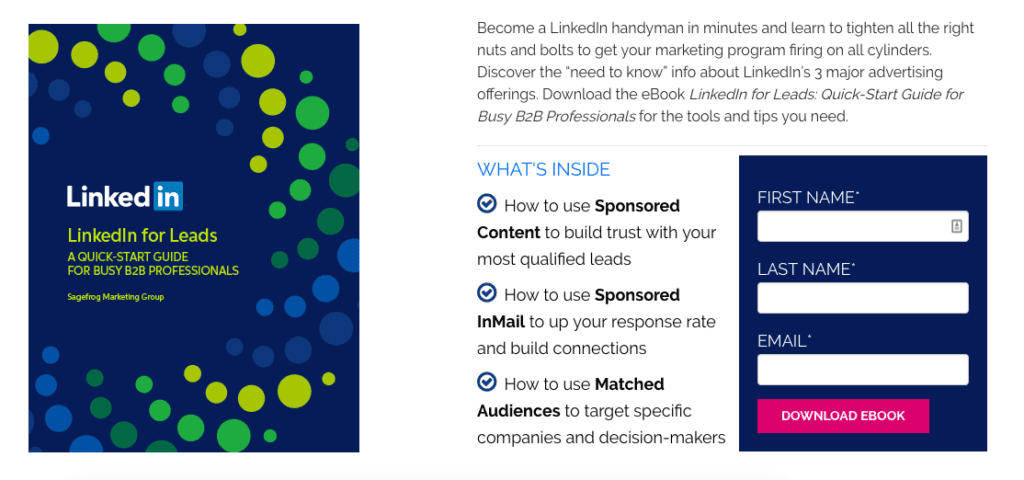
Deliver results within a timeframe
Everyone loves a quick win.
Use social proof
Humans are pack animals. We find it reassuring to know that others like us have done something.
This is why you often see CTAs like: ‘Join a community of 40,000 marketing experts’.
If you don’t have numbers, a testimonial on the cover or the landing page will also help. Or use your own success as social proof.
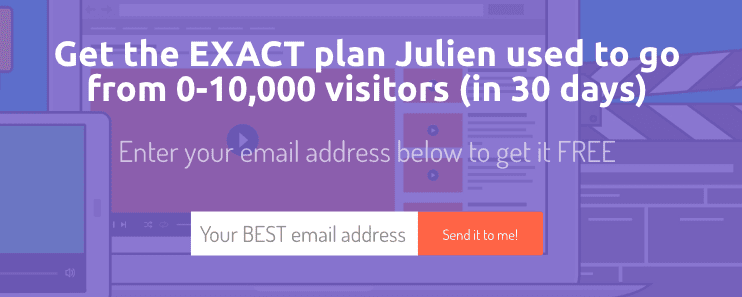
Create a sense of scarcity
The scarcer something seems, the more we want it.
Limit your lead generation campaign to a certain timeframe or number of downloads and the odds of conversion will be higher.
Co-create with a respected partner
This is a good idea if you’re just starting out. People are going to be more likely to convert if they recognise the people involved. Co-promotion can also help drive more traffic to your landing page.
Take the legwork out of a boring job
A common content format you see on agency websites is a social media calendar, showing you all of the topical moments a brand can tap into over the course of the year.
This approach works because it takes a time-consuming job and makes it as easy as filling out a form.
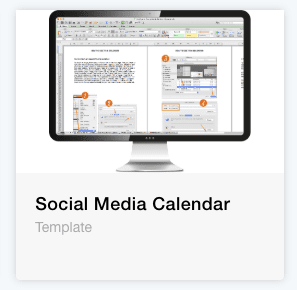
Create a repurposable template
Templates for infographics, slides, proposals or other types of content are a great way to give your target audience a helping hand.
You also have the option of branding up the template that you provide, which helps keep your brand front-of-mind each time they use it.
Round up valuable content
Staying on top of important trends and the latest news is hard work. Weekly or monthly roundups of the best stories and content in your niche can be a really useful service. Most of my favourite newsletters are round-ups.
Create an email course
Break your content up and turn it into an email course. Email is a proven way to build a relationship over time.
Build a simple tool, calculator or spreadsheet
These are handy if your audience do a lot of data analysis or calculations. Create a simple calculator tool or just a spreadsheet with the formulas filled out and ready for a user to punch their data into.
As a follow-up, you can offer a free consultation to review the data that they’ve entered, moving the interaction from transactional to consultative.
22 ways to optimise your landing page
Landing pages are the most important pages on your website after your homepage. They’re where conversions happen.
But a landing page that isn’t optimised to convert is pointless. Here are 22 tips to make sure your landing pages are doing what they’re supposed to.
One goal, one message, one action
Your landing page should have one CTA. Usually to fill out and submit the form.
The more CTAs you have – links to other pages or videos to watch – the less likely you are to achieve your core goal.
Make sure that you have one goal (what the user is trying to achieve), one message (how you will help) and one action (fill out the form).
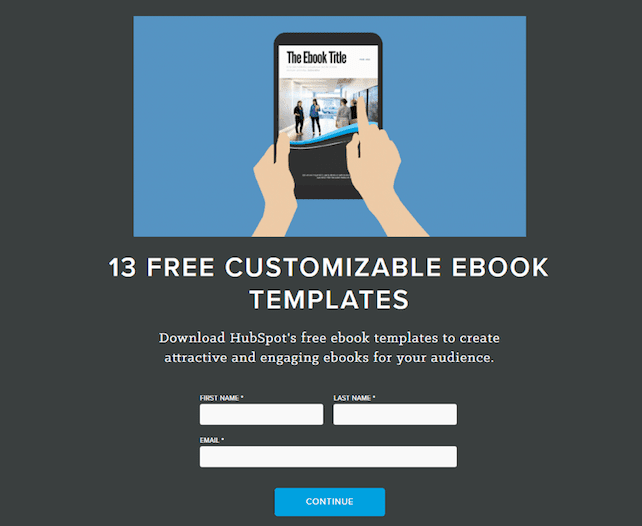
Focus on the core landing page elements
A landing page doesn’t require much more than:
- A headline
- An optional subheading
- A paragraph or two of explanatory copy
- An image
- A form
You may choose to include other elements such as testimonials or partner logos. This is fine, so long as these elements support the core CTA and encourage downloads.
Make it clear what you want the user to do and why they want to do it
The heading and subheading are the first thing that users see.
Make it obvious what the landing page is for and why they should care about your offer, or the SaaS product or service you’re promoting. If the user has to figure it out for themselves, they will leave.
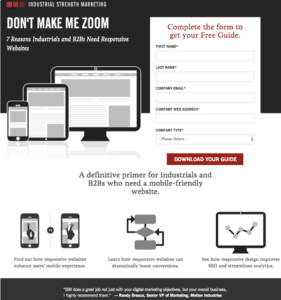
Have a clear visual hierarchy
Make the most important elements on your page stand out. This can be achieved by making them larger, more colourful or using call out boxes.
The key things to focus on here are the headline, the CTA and the form.
Lose the header navigation (and other distractions)
Limiting the user’s options increases conversions. Removing the header navigation helps with this.
Ideally you want just two choices: fill out the form or go back.
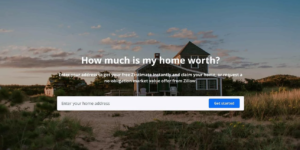
Bring the form up the page
Don’t make your users scroll! Bring forms up the page and right-align them so they appear above the fold. Some brands even embed them into the header banner.
Only ask for essential info
The more information you ask for, the less likely potential customers are to convert.
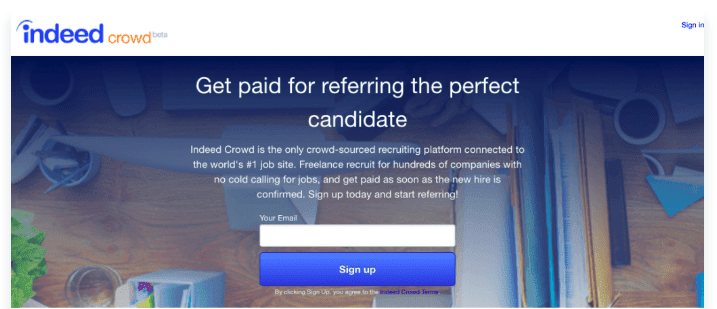
Reassure the user
Include links to your privacy and data security policy. You can also include badges of any data security partners that you work with and always make sure that your forms are compliant with GDPR.
Don’t include a note underneath your form saying ‘your email address will not be used for spam’. This has been proven to reduce conversions by up to 18%.
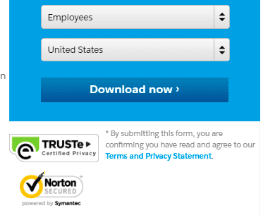
Segment and target by vertical or sector
Segment your traffic and target your landing pages to specific audiences. The more relevant you can make your landing page to a specific group, the better.
Make your buttons stand out
Don’t be shy with your buttons and CTAs. Make them large and bright enough to catch the eye.
Also, avoid using the word ‘Submit’. Use the copy to remind the user what they stand to gain. For instance: ‘Optimise campaigns’.
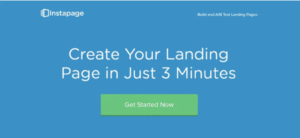
Use visual cues to guide the eye towards the form
Design elements such as arrows or pathways that lead the eye toward the form or CTA will focus the user’s attention.
Optimise for mobile
This is important for UX but also for SEO. Google punishes site’s which aren’t optimised for mobile.
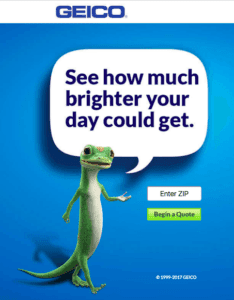
Optimise for search
Don’t optimise your page for the title of your content. Optimise it for the user’s goal.
Test your designs (pre-launch)
Before you take your landing page live test it on some guinea pigs. This can be done on-screen or printed off. Put it in front of them for five seconds then take it away. Ask them to tell you what the landing page was about and any key messages they can remember.
If they can’t remember the headline and CTA, revisit your messaging, banner and layout.
A/B test core features (post-launch)
Once your campaign is live, A/B test key features such as form position, banners and headlines.
Remember to only A/B test one feature at a time, otherwise it’s impossible to tell which element was responsible for the change.
Include social proof
If you got positive feedback from a previous reader, ask if you can feature it on the landing page.
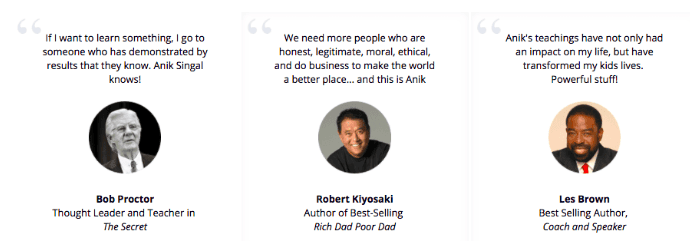
Show a (smiling) face
Smiling faces have been proven to increase engagement rates across all types of CTAs. For some reason, women more so than men.
Address the user directly
Address the reader directly by using the words ‘you’, ‘your’ and ‘you’re’ in the copy. For example, instead of saying ‘guaranteed to improve conversion rates’, say ‘guaranteed to improve your conversion rates’.
Use statistics
In the previous section chapter I mentioned how it can be helpful to quantify your content’s value in the title. You can do the same on the landing page.
The statistic can refer to the number of downloads or the impact of the document, or both. For instance, to roll both into one line: “Over 2,000 people have increased their conversion rates by as much as 15% using this document.”
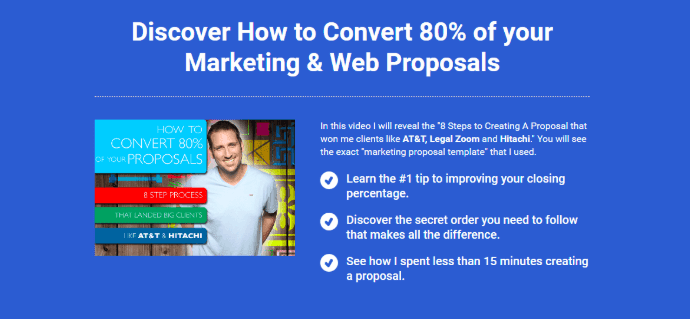
Create different pages for different segments
Create separate targeted landing pages for your key audiences.
They don’t need to be totally different from one another, but small changes in language used – specifically calling out the sector when possible – and imagery can have a massive impact.
Optimise load time
A slow landing page load time will annoy Google and your users. Reduce page loading times by reducing the file size of the imagery on the page.
Make sure that your CTAs match the landing page headline
If people think they’re getting one thing and arrive at a page that has nothing to do with that thing, they will bounce right away.
14 ways to get more traffic to your campaigns
Make sure that your website is channelling traffic to your landing pages and explore how you can encourage users to convert when they’re not on your landing pages.
Include banners on your homepage and relevant product pages
Create a handful of banners, sized for your homepage, blog feed and other prime real-estate. Use these to drive traffic from other sections of your site to your landing pages.
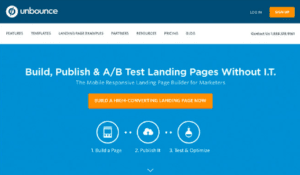
Include links in relevant blog posts
Be sure to pick copy that aligns with the keywords you’ve picked for your landing page, as this will benefit the landing page’s SEO.
Consider pop-ups or slide-in CTAs
These can be very effective at driving traffic, but don’t overload your website with these features as they can hamper UX.
Consider pop-ups or slide-in forms
Platforms like OptinMonster can help you to create pop-up or slide-in forms which appear when certain thresholds or conditions are met, such as time on your site or number of pages viewed.
Use exit intent
Exit intent is a type of pop-up that triggers when someone moves their mouse the URL bar. It gives you one last ditch attempt to convert them before they leave your website.
It can be annoying but it definitely works.
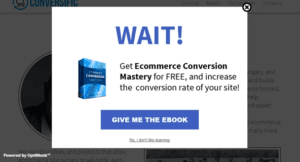
Create a sales toolkit
Your sales team have loads of contacts and relationships. Make sure you use them.
Draft emails for your sales team, along with content for LinkedIn and any other social channels.
Hack your long-form content up into blog posts
This is one of my all-time favourite distribution techniques.
Hack your content up into sections, repurpose them and publish them as search-optimised blog posts, one going out every week for the duration of the campaign and all of them linking back to the landing page. Make sure your CTA is eye-catching enough to hook the reader’s attention!
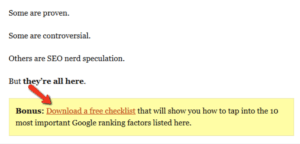
Create a bank imagery and gifs for social
Take key tips and insights from your campaign and turn them into imagery and gifs for social media.
Send targeted emails to relevant contacts
Targeting your email sends is an absolute must. And remember to remove any contacts that sales will be reaching out to. You don’t want to double up.
Create a footer banner for email signatures
Your business sends a lot of emails. Ask client-facing staff to include a banner to the campaign landing page in their email signature.
Use LinkedIn and Facebook lead gen ads
Lead gen ads display the signup form in the newsfeed and allow users to submit their account data in just one click (the platforms already have the user’s data and fill out the form on their behalf).
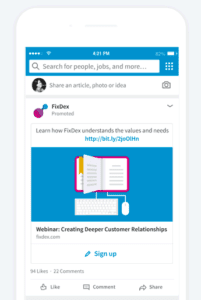
Write guest posts
Pitch articles to blogs that explore the themes in your content. Ask if you can include links to your landing pages for people that want to learn more.
Backlinks from guest blogging are good for traffic and for SEO.
Share your results to encourage participation
The support of the business can make or break any campaign. Especially sales.
After your launch, feed the results back into the business to show the impact that their participation has had and encourage them to do more.
You made it!
Top marks for making it to the end. Follow all of the tips in this guide and your SaaS company will have a reliable pipeline of high-quality leads in no time.
As I said, if you want to get maximum value out of this, bookmark it so you can jump into it whenever you want to improve the performance of your campaigns.
If you have questions or want to discuss anything in this piece in more detail, drop me a line on LinkedIn or Twitter. I’m always up for a chat.
Thanks for reading.




